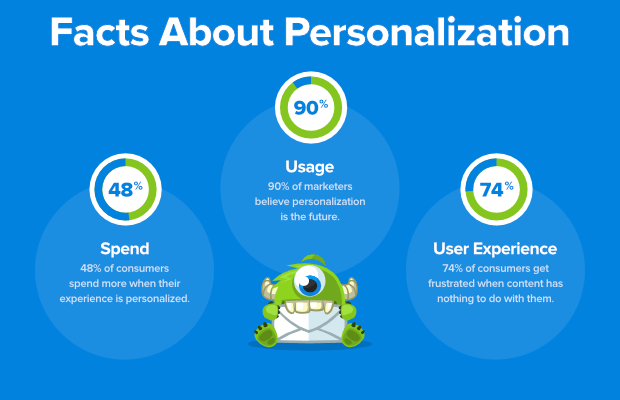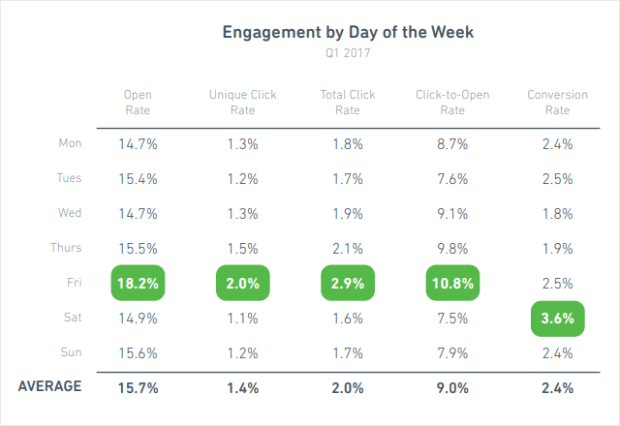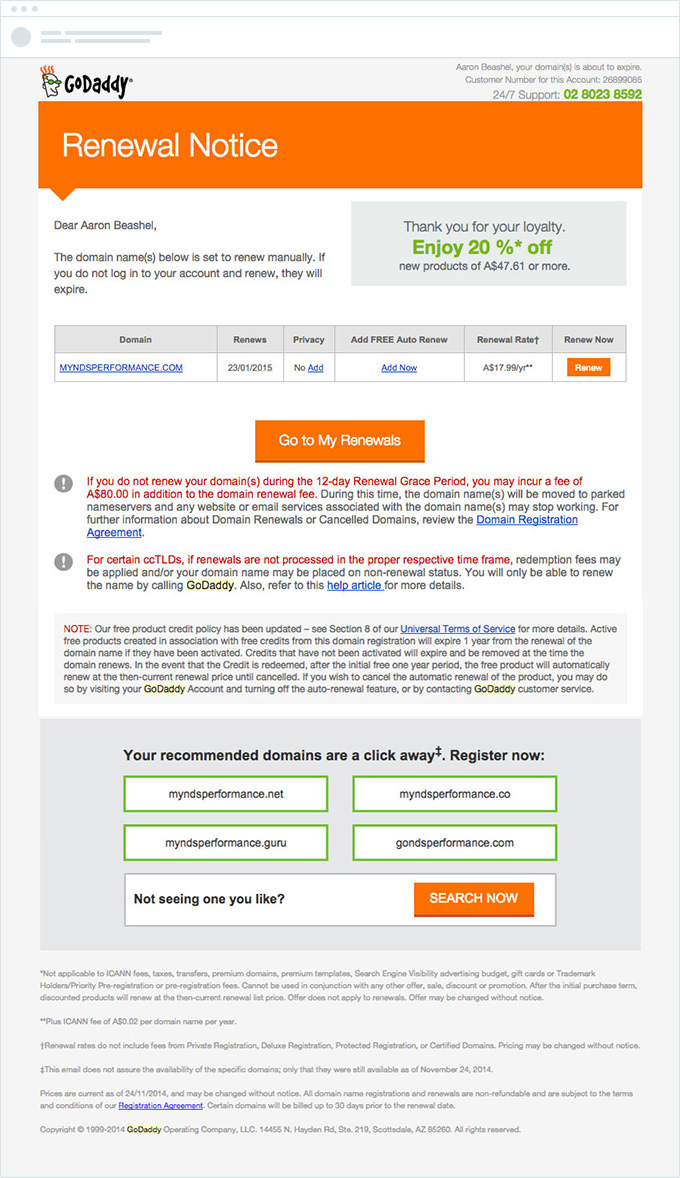
Email marketing is still one of the most effective ways of reaching your customers. Sending emails is very cost-effective and offers an impressive ROI. Furthermore, email marketing automation means that after some initial setup, this form of marketing is mostly “hands-off,” giving you more time to spend on creative thinking and building relationships.
Email automation enables you to send email responses that are triggered by customer actions. This means you can send an email at the optimal time to encourage a conversion. Automating your email also means you can easily send personalized communications and adjust your message for different target markets.
Quick Takeaways:
- Email automation offers several benefits to marketers, including saving time, easier-scaled marketing campaigns, and increased sales.
- There are several different types of automated emails. You can choose the type that will best suit your audience and business.
- Exploring the advanced functionality of email automation software can help you to optimize your ROI and create a better customer experience.
The Benefits of Email Automation
It’s pretty obvious why most brands use at least some form of email automation. After all, nobody is going to sit and tediously copy and paste a message to email out manually to thousands of subscribers.
But email marketing automation has many benefits that aren’t immediately obvious at first consideration.
Better user experience
Automating your emails means that you can personalize the content to suit whoever you’re sending it to. More personalization means more relevant content and better user experience in general.

On its most basic level, automated email personalization allows you to automatically insert the customer’s name and other details into the email. Reading an email addressed to “Dear John” feels much more personal than “Dear customer.” Even though most people know this personalization is automated, they’re much more likely to read and take action on the contents than they would with a generic email.
You can also use personalization to adjust the email’s content. For example, you could have specific content targeted to the user location or mention products they’re likely to be interested in based on shopping history.
All of this makes the email more relevant to each user, which can only be a good thing. Nobody wants to get an email of content that’s irrelevant or not useful to them.
Easily scale up your marketing strategy
Using email automation means you can quickly set up a set of rules and triggers to move each user through your marketing funnel based on their actions.
This is not only faster but also more efficient than attempting to carry out your marketing strategy manually.
For example, email automation takes the pain out of checking weekly to see which customers made a purchase in the last seven days and emailing them all manually. Instead, you are able to simply set up your processes so that a specific email is automatically sent to all customers who made a purchase.
Optimize delivery times
Sending your emails to their recipients at the time when they’re most likely to open and read them can make a huge difference to your open and conversion rate.
If you send an email to someone that hits their inbox at 3:00 a.m., and they have a lot of emails to get through the next day, there’s a good chance they won’t see it at all.

Increase revenue
Transactional emails are those sent automatically when a user performs a specific action such as downloading an ebook or completing checkout on an e-commerce site.
Sending this type of email can help to increase the amount spent per customer significantly. For example, an order confirmation email could be used to direct the user towards other products they might be interested in based on their recent purchase.
Maintain engagement with subscribers
Sending an email is an easy way to say to your customers and prospects, “Hey, we’re still here!”
Not everyone uses social media on a regular basis, and even if they do, there’s no guarantee that they’ll see your brand communications in their feed. Unless your blog is absolutely riveting, there’s a good chance they won’t remember to visit it regularly either.
Sending regular emails is a simple way to keep in touch with people that doesn’t require them to make any more effort than clicking in their inbox.
Email Automation Examples
You can get a better idea of how to use automated email marketing in your business by studying some common examples of how other brands use it.
1. Email welcome series
A welcome series is one of the most common forms of email automation and is an effective way to save time and build relationships with new followers.
This technique involves a series of pre-written emails that can be personalized and automatically sent out on a schedule whenever someone signs up to your mailing list.
A welcome series could be as short as a single email thanking the user for signing up, or it could include a year’s worth of weekly emails or even more.
2. Abandoned cart email
An abandoned cart email is another common example of email automation that most e-commerce sites use.
With this type of automation, the site automatically sends out an email to customers that have added items to their shopping cart but have not checked out.
The average cart abandonment rate is over 68%. This type of email can significantly reduce this rate by acting as a reminder and a prompt to buy for customers who were unsure about their purchase or simply got interrupted before they could complete their purchase.
3. Birthday emails
If you collect your customers’ date of birth, sending a personalized email message on their birthday is a great way to make them feel valued and build a stronger relationship.
Birthday emails can be an effective way to increase sales too. Sending an exclusive discount code as a “birthday treat” can encourage customers to make purchases they wouldn’t have normally considered.
4. Email reminders
You can use automatic email reminders to warn customers of upcoming account expiration, remind them of an appointment, or remind them it’s time for a routine service.
Automatic email reminders will not only save you a lot of administration time, but they can help to encourage repeat business too.

5. Regular newsletters
With automation in place, you can be more efficient in creating content for your emails as you can write them in bulk and queue them up to drip-feed over the following weeks or months.
6. Email course
An email course is a specific type of welcome series, although you won’t necessarily send it to new subscribers only.
Offering a course can be a highly effective way to attract new subscribers, and it can help drive conversions or demonstrate how to get the most out of your products and services.
Advanced Email Automation
With email marketing automation, you can make things as simple or advanced as you wish. You can get a lot of benefits from basic automation, but by taking things a little further, you can really start to optimize your conversions.
Segment your subscriber list
Some email marketers maintain a single subscriber list and send emails out to everyone on the list. There’s nothing wrong with this approach, particularly for sending out basic newsletters.
However, segmenting your subscribers based on certain criteria such as location, job position, industry, and where they signed up to your mailing list can help you to personalize your emails for better click-through and conversion rates.
Create specific landing pages for email visitors
Rather than sending people who read your emails directly to your home page or a particular blog post, you can create landing pages designed specifically for mailing list traffic.
Split test your emails
Making small changes to things like the title of your email or the position of CTAs can make a big difference in how many people open it, read it, and take action.
Most email marketing software has split A/B testing functionality, so you can send out two or more versions of one email and compare data such as open rate and conversion rate to see which version was most successful.
Let Your Email Work For You
When planned properly, email automation can be a real powerhouse that is constantly working for you in the background while you focus on with other priorities.
Of course, it’s still important to make sure that the content you’re linking to in your emails is high quality and relevant, or you’ll be wasting the opportunity.
If you are ready to get more traffic to your site with quality content published consistently, check out our Content Builder Service.
Set up a quick consultation, and I’ll send you a free PDF version of my books. Get started today — and generate more traffic and leads for your business.
The post What Is Email Marketing Automation and Why Does It Matter? appeared first on Marketing Insider Group.
What Is Email Marketing Automation and Why Does It Matter? posted first on http://rssmix.com/u/11592782/rss.xml
No comments:
Post a Comment